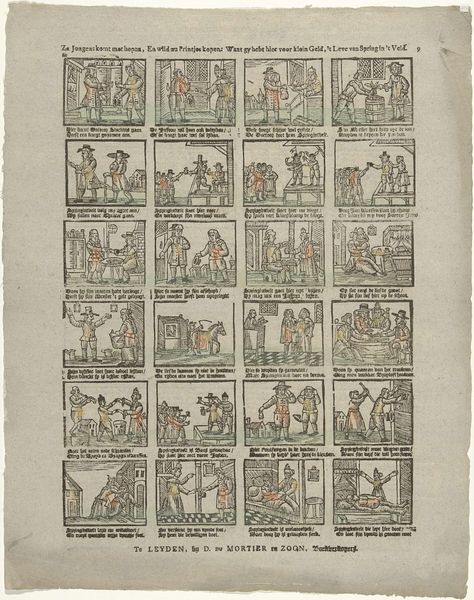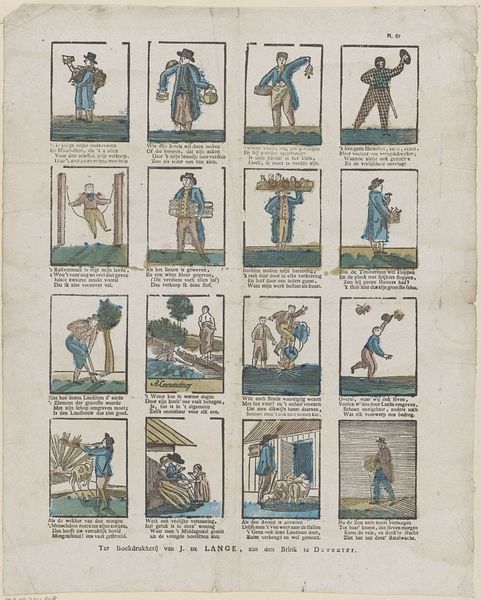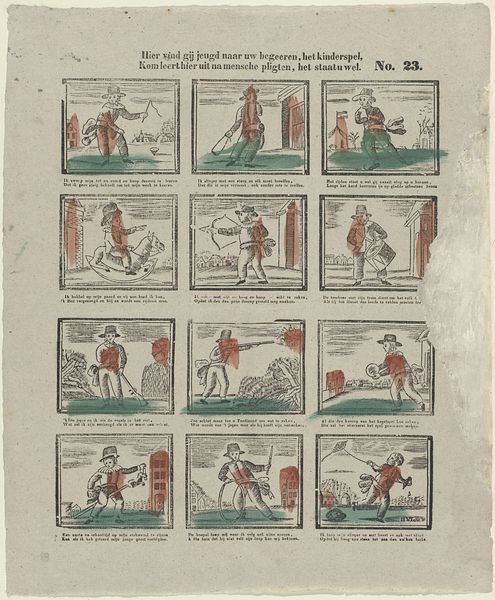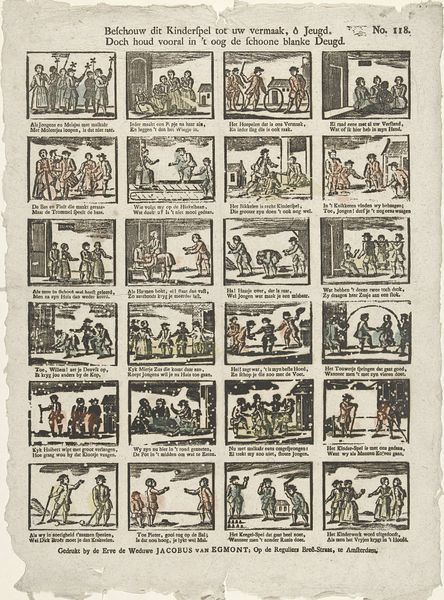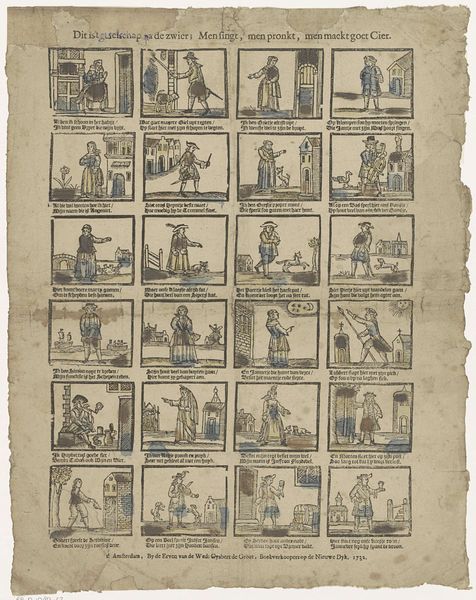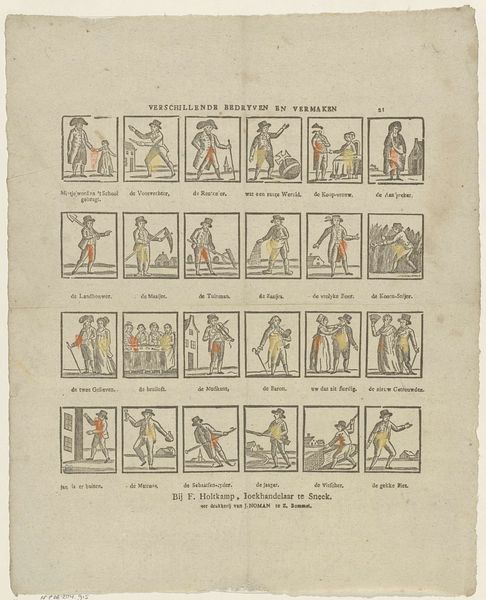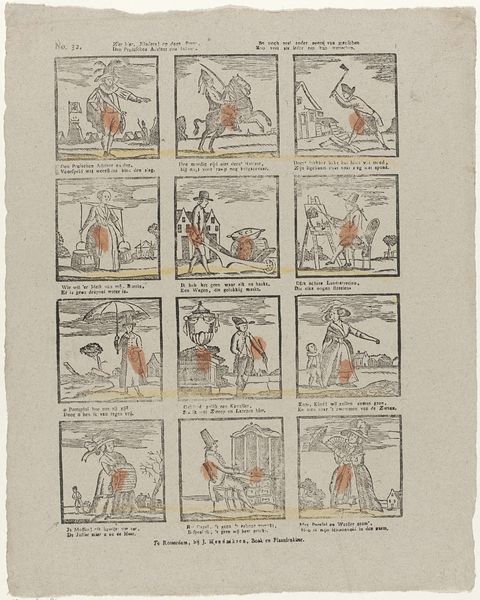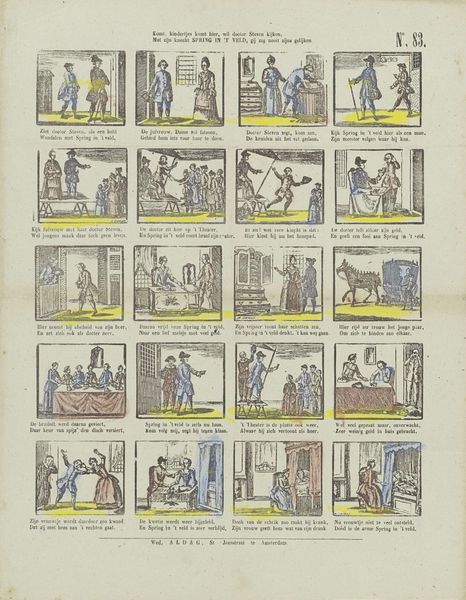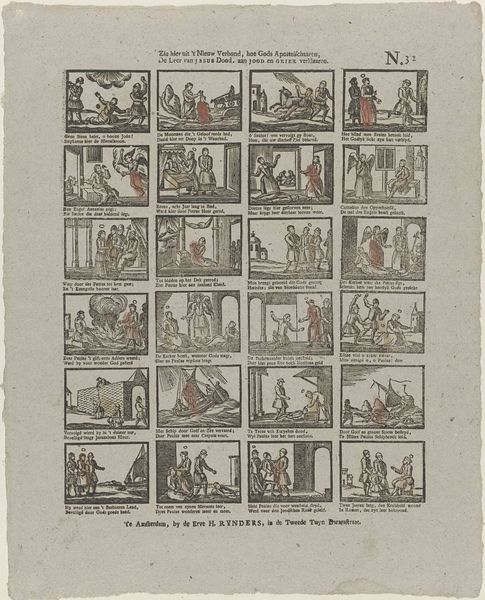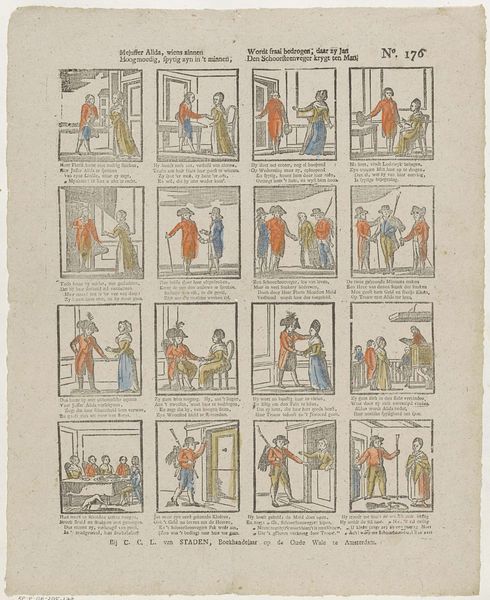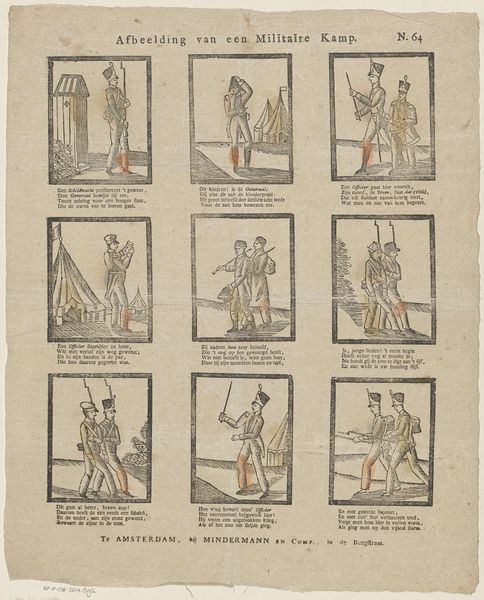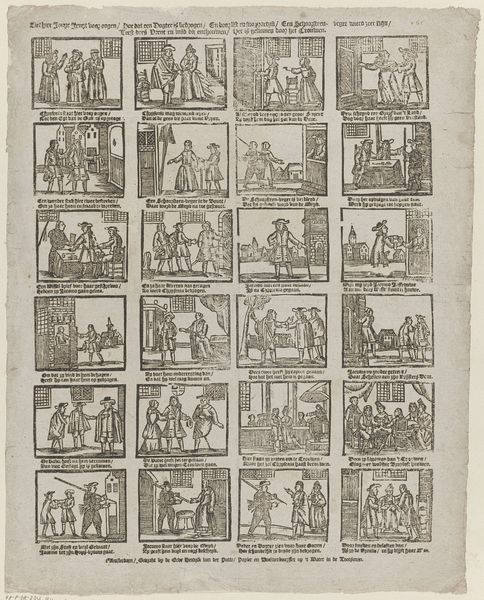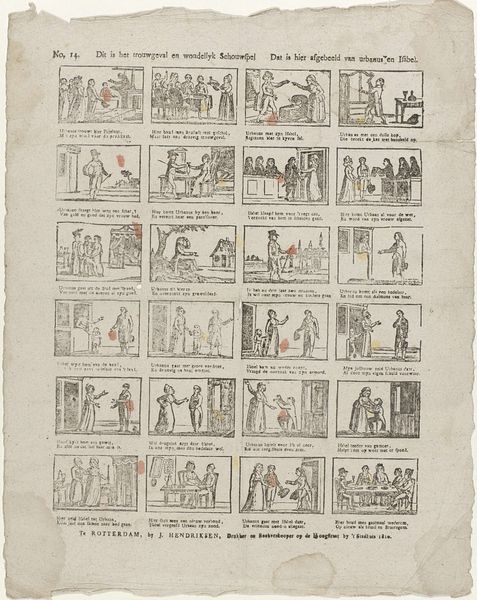
Kinderen, zoo ge u wild vermaken, / Komt, beschouwt dan deze snaken, / Elk in zyn stand en doen, / Wilt daar by uw leeslust voên 1781 - 1828
0:00
0:00
graphic-art, print, engraving
#
graphic-art
#
narrative-art
#
dutch-golden-age
# print
#
folk-art
#
genre-painting
#
engraving
Dimensions: height 403 mm, width 334 mm
Copyright: Rijks Museum: Open Domain
Editor: This print by Jan Hendriksen, dating from around 1781 to 1828, presents a series of little scenes. It feels almost like an early comic strip, doesn't it? Each vignette is accompanied by text. I'm struck by how each tiny illustration attempts to capture a complete story. What do you make of this piece? Curator: It’s fascinating to consider this within the broader context of the Dutch Golden Age and its legacy. Prints like these, especially those with verses, played a significant role in shaping social norms and conveying moral lessons. The seemingly simple scenes were deeply intertwined with the period’s socio-political fabric. The focus on everyday life—farming, fishing, courting—what do these choices suggest to you about the intended audience and the values being promoted? Editor: Perhaps a focus on the virtues of simple life? Or the different roles within society? But, who was actually buying this? Was it for the wealthy to instruct their children, or for a more general audience? Curator: That's the critical question, isn’t it? Prints became increasingly accessible during this period. Consider the role of printmakers and publishers like J. Hendriksen in shaping popular culture. These images circulated widely, entering homes and influencing perceptions across different social strata. Also consider what it meant to be able to read these versus relying on an image alone. Editor: So, this wasn’t just about aesthetics; it was a tool for social education and, potentially, control. Curator: Precisely. The ‘narrative art’ and ‘genre painting’ aspects suggest that art was very much embedded in the everyday lives of people, functioning as a mirror reflecting and shaping their worldviews. Editor: It makes you wonder about the stories and the reading experiences contained within a single sheet of paper. Curator: Indeed! Thinking about the layers of cultural significance definitely enriches my understanding of this piece. Thank you for walking me through this piece.
Comments
No comments
Be the first to comment and join the conversation on the ultimate creative platform.
